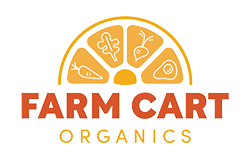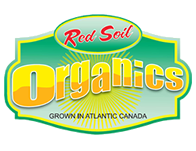Editor's note: The following report is from Organic Produce Market Guide 2024.
According to total U.S. multi-outlet data from Chicago-based market research firm Circana OmniMarket Integrated Fresh for the 2023 calendar year, dollar sales reached 8.3 billion, up 1.4% from the previous year, and volume sales grew 0.7% to 2.8 billion pounds.
Conventional produce dollar sales saw a larger increase at 2.1% while volume sales grew 0.4%.
Jonna Parker, principal of the Fresh Foods Client Insights Group at Circana, said that while a gain of less than 1% in volume sales may seem small, it was a significant achievement for 2023.
“Three-tenths of a point in pounds in an inflationary environment is a big deal,” she said, adding that this kind of gain is especially rare for a premium segment such as organic produce. “The top-line takeaway is that organic produce does have a vital and fervent following among a segment of consumers. Despite all the headwinds in 2023, they still showed up with strong demand.”
On the flip side, Parker said, the category still represents a small segment of the market.
“The share of both dollars and pounds for organic among total produce has really flatlined in the last five years,” she said.
In 2023, its share totaled approximately 12% in dollars and 8% in pounds.
There are several reasons behind the year's gains, Parker said. In 2023, consumers finally shifted away from pandemic-fueled buying behaviors such as stocking up and limiting trips to the grocery store. In addition, stores such as Walmart and Target expanded their organic produce selections, and organic options became available in more places.
Given these tailwinds, Parker said, some may wonder why organic produce didn't see even stronger sales in 2023.
“What tempered growth is that people were buying just what they needed when they needed it,” she said.
And although overall price per volume remained flat, rising costs for all types of consumer goods led shoppers to rationalize their spending.
Why consumers chose organic
The Packer's Organic Fresh Trends 2024 survey polled more than 1,100 U.S. consumers in mid-October 2023 about their organic buying habits. When asked why they buy certified organic produce, respondents called out health reasons, environmental responsibility and a desire to avoid chemicals as primary factors.
Five percent of respondents who reported buying organic produce in 2023 said that the category accounted for more than 75% of their annual fruit and vegetable purchases, compared to 10% who gave the same answer the previous year. The largest percentage, 30%, reported that organic items made up 26% to 50% of their yearly produce purchases.
Buying organic produce is especially important to younger shoppers. When asked about the type of produce they typically buy, nearly half of those in the 30-39 age group cited organic compared to just 22% for participants aged 60 or older.
“Organic produce meets the growing consumer desire for clean, healthy food,” said Tom Chapman, co-CEO at the Organic Trade Association in Washington, D.C. “The most recognized benefit of organic — produced without toxic, synthetic pesticides — is easy for consumers to grasp when thinking of eating berries picked off a plant or vegetables pulled from the ground.”
The berry juggernaut
The organic fruit category saw solid performance in 2023, according to Circana, growing 3.3% in dollar sales to $3.4 billion and increasing 2.6% in volume sales. Price per volume increased just 0.7%.
Sales growth for conventional fruit lagged in comparison. Dollar sales increased 2.3% in 2023 to $36.8 billion, and volume sales increased 0.9%. Price per volume for conventional fruit grew 1.4% in 2023 compared to a 10% spike the previous year.
Circana data shows that organic berries were 2023's top sellers in dollar sales, up 12% over the prior year to $1.4 billion. In addition, the category gained three share points. Apples took the No. 2 spot at $673 million (down 4.3%), followed by bananas at $470 million (up 7%).
“Berries continue to be a juggernaut,” Parker said, adding that breakfast is a big driver of increased purchases. “In our consumption data and our at-home behavior data, we noticed that a lot of consumers are eating oatmeal and grain cereals, and snacking on fruit in the morning. Berries have really cemented themselves in the consumer's mind as being a part of that.”
Strawberries were the top-selling berries by both volume and dollar sales, followed by blueberries and raspberries.
Jeff Cady, vice president of produce and floral at Northeast Shared Services — a Schenectady, N.Y.-based subsidiary of Northeast Grocery, the parent company of Tops Friendly Markets and Price Chopper/Market 32 — confirmed the popularity of organic berries.
“They're selling more and more every year,” he said.
Organic bananas also had a great year, according to Circana, gaining 7% in dollar sales and 5% in volume.
“They're an easy snack for kids, and we know that the organic banana buyer historically won't just switch to conventional,” Parker said. “There are organic bananas everywhere, and I think that helped.”
Another kid-friendly fruit — mandarins — performed well last year, growing 52% in dollar sales and 65% in volume. This ties in with the profile of the younger organic consumer, Parker noted, which typically has small children at home.
The melon category gained nearly 17% in dollar sales and 16% in volume, with mini seedless watermelon topping dollar sales, followed by cantaloupe.
Chapman noted that tropical fruits such as mangoes attracted more consumer interest in 2023. Circana data shows that dollar sales for organic mangoes grew 5.7% versus 1.5% for their conventional counterparts, and organic mangoes saw a larger volume increase at more than 8% compared to less than 3% for conventional mangoes.
Conventional grapes saw good performance, yet organic bunches declined almost 12% in volume and 7% in dollar sales. Parker said this was partly due to a strong conventional crop dominating store displays.
Sweetpotatoes on the rise
Organic vegetables made small gains in 2023. Dollar sales inched up 0.1% to just under $4.9 billion, and volume sales increased 1.3%. Price per volume grew 1.4%.
For conventional vegetables, dollar sales grew nearly 2% to $34.8 billion, volume dipped 0.1%, and price per volume increased 1.9%.
According to Circana, salad blends were 2023's biggest seller by dollar sales at $550 million, down 6% from the previous year. Spinach followed at $500 million (down 5.5%), along with carrots at $405 million (up 2.4%).
Some of the strongest growth in dollar sales occurred for cooking greens (36%), rhubarb (28%), corn (29%) garlic (15%) and asparagus (nearly 12%).
By volume, carrots, potatoes and onions were the biggest sellers. Corn (37%), mixed herbs (34%) and garlic (21%) saw impressive volume gains.
“Because of food cost inflation, '23 saw a return to staples and cooking,” Parker said. “Some of the categories, whether organic or conventional, that really outperformed in fresh produce were things like onions, potatoes, carrots, garlic and fresh herbs — things that you need to cook at home.”
Thanks to their popularity for snacking, Parker said, cucumbers were a bright spot in the organic vegetable category last year, along with sweetpotatoes and yams.
“Sweetpotatoes have really grown in the foodservice sector as a popular ingredient in a wide variety of dishes,” Parker said, especially for younger, affluent consumers inspired by “foodie culture.” The category saw 8% growth in dollar sales and 12% volume growth.
Parker compared the sweetpotato's rise to the kale craze of 10 years ago, when conscious consumers — those whose purchasing decisions are based on ethical, social and environmental considerations — flocked to the vegetable.
“The same people who were invested in organic produce really got behind kale as a superfood,” she said. “And I think with sweetpotatoes, it's the same thing.”
It also helped that the price gap was minimal between organic and conventional sweetpotatoes, she added.
Among the year's declines, Parker called out salad blends and spinach. The greens ranked highest in total dollar sales but declined in volume. However, the same was true for their conventional counterparts.
For Cady of Northeast Shared Services, the organic salad category remained strong in 2023. He also saw increases for organic peppers, tomatoes, potatoes and salads.

Inflation and pricing impacts
The year-over-year inflation rate declined in the U.S. in 2023, yet price was still a factor in produce-buying behavior. In The Packer's Organic Fresh Trends 2024 survey, 33% of respondents reported purchasing a smaller amount of organic produce than in 2022 as a result of higher costs.
“Due to changes in the economy and inflation, we saw that some consumers began exploring conventional options for their fruit and vegetables,” said James Braswell, senior category manager of produce and floral at Fresh Thyme Market, based in Downers Grove, Ill. Even so, he added, consumer demand remained high for organic salad blends, berries, apples and grapes.
Jack Keane, vice president of category management for Stop & Shop, headquartered in Quincy, Mass., said organic produce sales were flat or up slightly in 2023.
“Inflation has had an impact on organic purchasing,” he said. “And it is one of the reasons the category did not grow further in 2023.”
Fruit continued to be the top category for organic purchases, he said, especially berries, grapes, apples and bananas. Packaged salad was the biggest draw in the organic vegetable and convenience categories.
Keane said he saw some customers moving toward controlled environment agriculture produce last year, which is not necessarily organic but still offers environmental benefits, such as using less water, fertilizer and pesticide, while being grown closer to local markets.
Chapman of the Organic Trade Association said that inflation had the most impact in early 2023, and its effects lessened as rates came down to a more normal range of 2% to 3%.
“We noticed year-over-year organic percentage of sales following a similar pattern where they were performing below total store for the first three months of 2023 and overperforming for the last three months,” he said.
“What helped organic produce was that the price increase in comparison to other aisles, categories and consumer goods was really not that high,” Parker said. “Second, the core consumer for organic is in a segment of the marketplace that isn't as prone to price sensitivity. This over-indexing organic consumer is buying based on their wellness and ethical goals.”
The conscious consumer
The organic-buying conscious consumer is most likely to be a millennial or Generation Xer, Parker said, or to a lesser extent, an affluent baby boomer.
Conscious consumers often have children under 18 living at home, she noted. These families began cooking together during the pandemic, and they continued to do so in 2023 as restaurant prices rose.
“Interestingly, in 2023 we did start to see some organic produce purchases among lower income consumers,” Parker said, adding that some shoppers used their Supplemental Nutrition Assistance Program and Special Supplemental Nutrition Program for Women, Infants, and Children benefits at the register. “We definitely see the $70,000-plus per year, affluent households are more likely to be engaged in the organic movement, but we also see some elements in low income [shoppers] with government assistance.”
Cady confirmed interest in organic produce among younger generations.
“Demand was up in totality, despite some hurdles a lot of them had with SNAP benefits being pulled away,” he said. “They're willing to spend more money on the foods that they want.”
Health and wellness remained a driver for organic produce sales in 2023, Parker said, particularly for older generations looking to eat more fresh fruits and vegetables due to doctors' orders or special diets.
The concept is more complicated for millennials and Gen Z, she added.
“On one side they know they should be eating more fruits and veggies, but they also like to indulge and have fun,” Parker said. “I always quote that funny meme, ‘I wish I was the person I thought I was when I bought all this produce.' These 20-somethings and 30-somethings want to eat much more produce than they're actually eating.”
What's important to remember about the health and wellness movement, Parker said, especially with the affluent, younger conscious consumer, is that there is a lot of marketing competition in that space for their snacks, side dishes and meals.
“We can't rest on our laurels because there's a wellness movement,” she said. “We've got to show up to the table.”
Promoting organic
The Organic Fresh Trends survey asked participants who reported purchasing organic fruits and vegetables at least periodically to share their thoughts on how the produce should be presented in stores. Fifty-three percent said they prefer to see organics in their own separate area, while 34% want to see organic produce intermixed with their conventional counterparts — marked with signage.
When asked about in-store factors that influence their decision to purchase organic produce, 41% cited appearance, 21% called out signage explaining where and how the product was grown, and 25% cited signs that list the advantages of organic produce.
“In the Price Chopper world, we've continued to have sections, though we've begun to dual-place on some key items, like berries,” Cady said. “Instead of just leaving them in the segregated section, we're pulling them out and tying them in with the regular display just to give them more visibility.”
In certain Tops stores, he added, they've integrated organic and conventional produce. Cady thinks it's what the average customer prefers, because it allows shoppers to compare products and decide whether or not they feel it's worth the extra 20 or 30 cents to try organic.
“What I always say about the ‘store within the store' is that I might was well just hang a sign over it that says, ‘This is where the more expensive produce is,' and see how many people come over,” he said.
In the stores' weekly ads, both in 2023 and ongoing, Cady promotes conventional and organic produce side by side.
“If I put Vidalia onions on the front page for $1.49, for example, I'll put the organic onions in a burst next to it for $1.79,” he said. “That way people can compare.”
Fresh Thyme also highlights organic produce in print ads, as well as digital media.
“These themed offerings are showcased in prominent locations across the department and integrated with other products to get them maximum exposure,” Braswell said.
While organic produce performed well in 2023, Parker said she would like to see retailers do more digital and social media marketing.
“The second piece is who you market to,” she said. “I'm always shocked by how easy and cost effective it is to build a purchase-based audience through social media or digital platforms.”
That means spending a little more to serve ads to users who have previously bought organic produce in a particular category, rather than targeting people who generally care about health.
“We have proven time and again that this is anywhere from four to 10 times more impactful,” she said. “Why not go exactly to the people who we know are most likely to buy?”












